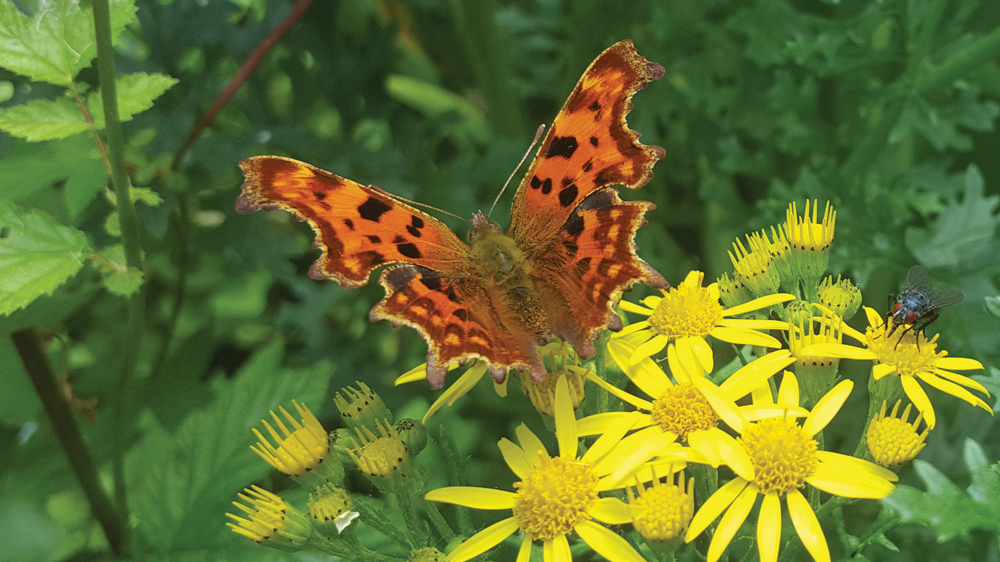

Nature on our doorsteps: Pre-flight procedures
Rosaleen Dwyer is the County Heritage Officer at South Dublin County Council – every week she gives us an insight into nature on our doorsteps and the beautiful biodiversity of its plants and wildlife.
MOTHS AND butterflies are cold-blooded insects.
They cannot automatically maintain or adjust their internal body temperatures, so they have developed other ways to do this.
If a moth or butterfly is disturbed while resting amongst vegetation, they often do not quickly fly away, especially if the weather is cool or damp.
At best, they might only weakly flutter a short distance.
These insects need to be warm if their wings are to work effectively.
More specifically, they need to heat the particular muscles on their chests that control wing movement.

This Beautiful Golden Y moth is vibrating so fast that its wings look blurred
For butterflies, these wing muscles need to ideally reach a temperature of over 30° Celsius before they are ready to work.
As Irish weather rarely reaches this temperature, butterflies need to generate their own heat.
They do this by using friction, by rapidly vibrating the chest muscles that control their wings.
This vibration makes the insect look like it is shivering, but the result is that the muscles will heat up enough to allow it to flap its wings effectively.
Butterflies will also move to a sunnier place to warm up faster. Moths, of course, are mostly night-time insects.
They rely heavily on this vibration technique to warm up before they emerge at dusk, or whenever they are disturbed from sleep during the day.
Some moths also vibrate their wings in this way to attract females.
It is thought that the ‘dusty’ scales on the wings of moths and butterflies also help.
These tiny scales are arranged along the wing surface like roof shingles.
They are tilted at a very slight angle, trapping small pockets of air underneath.
As the insect vibrates to warm up, the trapped air also heats up.
It is thought that this additional layer of hot air under the scales provides extra lift to the butterfly as it takes off and flies away.

